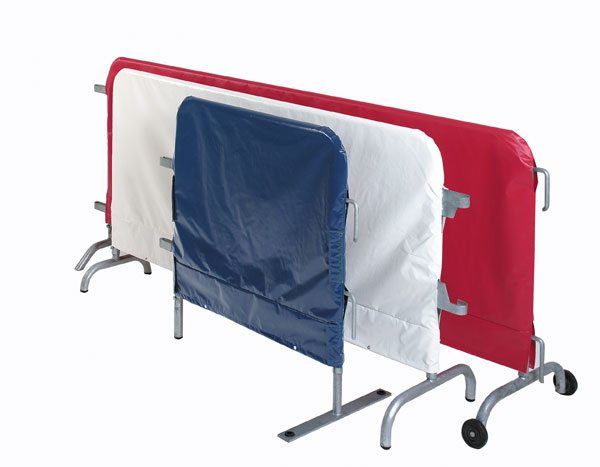Introduction
The most vulnerable part of a steel barricade is its bases. The wear and tear caused by the use and movement of a steel barrier will most often become evident in damage to the bases.
To minimize the risk of having any of your barriers “out of commission” due to base damage, purchase barriers with bolt-on replaceable bases, rather than welded-on bases. Barriers which feature bolt-on replaceable bases are much more cost-effective. A barrier with a damaged base won’t sit idle for long – it is very easy and inexpensive to replace a base, as opposed to purchasing an entire new barrier.
There are four main types of interchangeable bases for steel barricades. Each offers advantages for specific applications.
Traditional Bridge Base
The bridge base has been the most popular base style since steel barriers were invented. Bridge bases provide the best resistance to “push” by crowds at events such as parades.
Bridge bases are designed so that each individual barrier has one large base (a little over 26 inches wide) and one small base (19.5 inches wide). This allows all four points of the base to “dig in” and remain in constant contact with the ground, providing maximum stability on uneven surfaces. Bridge bases also accommodate the placement of barriers in both straight lines, and at various angles.
Flat Base

Flat bases for the male and female ends of a barrier are identical in length (23.5” wide), but the placement of the bolt hole is higher on the male end. Rubber inserts for flat bases were introduced in 1998, and most suppliers have now made this feature standard on flat bases. With rubber inserts to protect flooring, flat bases can be used indoors. Rubber inserts are most effective when they are wider on the bottom than on the top.
Most high-quality flat bases now feature beveled corners to eliminate any sharp edges which could potentially cut anyone coming in contact with the base.
Flat bases also feature holes for optional semi-permanent anchoring in outdoor locations.
“U” Base

Wheel Base

Inserts

A Proper Fit?
The base styles discussed above will result in a proper fit for almost all existing styles of barriers. However, there are some discontinued frame variations which may not accommodate the standard base styles. In such rare instances, workable replacement bases are available from most long-standing companies serving the crowd control barrier market
Conclusion
The specification of steel barricades with bolt-on bases is far more cost-efficient than barricades with welded on bases. With interchangeable replacement bases, barricades with damaged bases can be easily and inexpensively put back to work. There are four popular base styles, each offering advantages which have historically been dependent upon the specific use of the barrier or the preference of the entity using the barrier. Most reputable suppliers of steel crowd control barricades can quickly identify and provide the ideal base style which meets their customers’ needs.


